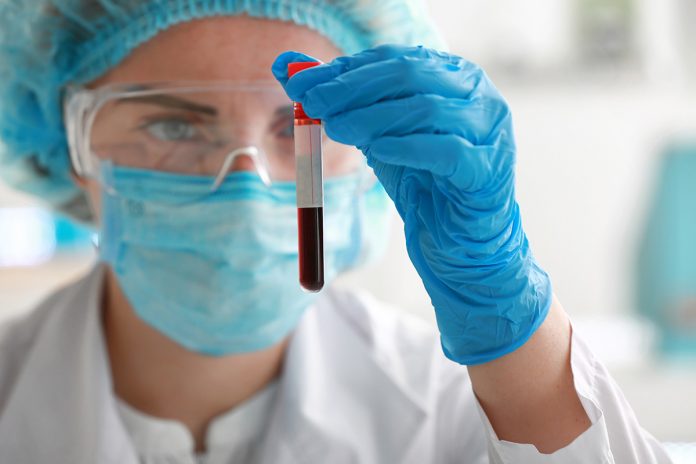Joseph Najjar and Andrew K. Udit, PhD from the Department of Chemistry at Occidental College enlighten us on the importance of Cytochromes P450 in medicine and industry
Industries such as pharmaceuticals and textiles are dependent on the ability to perform chemical reactions easily and efficiently. Enzymes are particularly sought as catalysts in chemical reactions due to their specificity, high efficiency, and ability to function under mild conditions. The cytochrome P450 (CYP) enzymes are especially suited to such applications. CYPs are a class of iron-containing proteins (hemeproteins) found across all kingdoms of life. CYPs catalyse a wide array of reactions and are critical in the synthesis of numerous biological molecules. In humans, CYPs synthesise many hormones and steroids, and metabolize nearly 90% of known pharmaceuticals1, 2.k
Safety of new medications
Drug metabolizing CYPs can aid in evaluating the safety of new medications, with implications for clinical administration and dosing guidelines. The products of drug metabolism often exhibit biological activity of their own and, therefore, must be considered when evaluating drug safety. However, producing sufficient quantities of these metabolites with the right molecular structure can be difficult using conventional synthetic chemistry3. Drug metabolizing CYPs offer an alternative avenue to the production of these compounds; indeed, CYPs have been used to make practical quantities of the metabolites of naproxen and ibuprofen (the active ingredients in Aleve and Advil, respectively)3. Similar methods can be applied to study experimental drugs like remdesivir, an antiviral medication being evaluated in the treatment of COVID-19, which is also a substrate of human CYPs (specifically CYP2C8, CYP2D6, and CYP3A4)4. CYPs versatility lends itself to more than drug metabolism, also finding application in drug synthesis. For example, pravastatin, a drug used to treat high cholesterol, can be synthesised using microbial CYPs, producing up to 6 g/L of the drug (approximately 150 adult doses/L) — a quantity sufficient for industrial production5, 6.
CYPs catalyse a wide array of chemical reactions, primarily oxidations (hydroxylation, epoxidation, etc.). Engineering CYPs to perform this chemistry on molecules it does not normally use as substrates, and even expanding the type of chemistry performed by CYPs, are active areas of research2, 7. Directed evolution is one method used to develop novel CYPs. It mimics the natural evolutionary process to alter protein function, albeit on a much quicker time scale. Natural evolution utilises the gradual introduction of random mutations, with changes that increase fitness passed on through natural selection.
Directed evolution
Similarly, directed evolution relies on the introduction of random mutations to a particular gene; in this case, the resulting mutants are rapidly screened and selected for specific functions. Directed evolution is an iterative process, and usually requires multiple rounds to achieve functional changes2, 7. Since its discovery as a tool for rewriting protein function, directed evolution has been exploited widely: the 2018 Nobel Prize in Chemistry was awarded to its pioneer, Frances Arnold, who has applied the technique extensively to CYPs. Directed evolution has been used to engineer CYPs capable of producing preparative scale quantities of small alcohols, such as propanol, from their corresponding alkanes8. In another example, 4-aminophenol, a precursor in the synthesis of acetaminophen (the active ingredient in Tylenol), was successfully produced in large quantities using CYPs engineered via directed evolution9.
The electron problem
While CYPs have great potential in pharmaceutical and chemical applications, widespread industrial use of these enzymes is currently limited. CYPs require an electron donor, often NAD(P)H, which powers the enzyme’s catalytic function. However, the cost of NAD(P)H makes large-scale use impractical1, 2. This issue can be avoided through the use of whole cell biotransformation, in which cellular CYPs utilise NAD(P)H derived from various processes within the cell (e.g., pravastatin synthesis discussed above)10.
Another approach might replace NAD(P)H entirely: the so-called “holy grail” of CYP research would utilise a more cost-effective electron source, such as an electrode, to provide a steady supply of electrons to purified enzyme, thereby eliminating unnecessary cellular components1, 10. However, electrons do not flow easily from the electrode to the CYP — they require assistance in reaching the enzyme’s catalytic centre. Some proposed solutions include directly linking the enzyme to an electrode, trapping the enzyme in a film on the surface of an electrode, and attaching a molecule to the enzyme to mediate the electrode-CYP electron transfer1. Electrode-mediated systems for CYP have the potential to greatly aid in expanding the applications of these enzymes. Successfully developing such systems may allow access to novel chemistry, facilitate medical and pharmaceutical applications, and make large-scale chemical synthesis “green” and economic.
References
1 A.K. Udit et al. Electrochemical Activation of Cytochrome P450, in Electrochemical Processes in Biological Systems (eds. A. Lewenstam and L. Gorton), pages 133–167, John Wiley & Sons, Inc (2015).
2 L.H. Xu and Y.L. Du. Rational and semi-rational engineering of cytochrome P450s for biotechnological applications. Synthetic and Systems Biotechnology (2018) 3:283–290.
3 A. Rentmeister et al. Engineered Bacterial Mimics of Human Drug Metabolizing Enzyme CYP2C9. ChemCatChem (2011) 3:1065–1071.
4 E.K. McCreary and J.M. Pogue. Coronavirus Disease 2019 Treatment: A Review of Early and Emerging Options. Open Forum Infectious Diseases (2020) 7:ofaa105.
5 K.J. McLean et al. Single-step fermentative production of the cholesterol-lowering drug pravastatin via reprogramming of Penicillium chrysogenum. Proceedings of the National Academy of Sciences USA (2015) 112:2847–2852.
6 D.B. Hunninghake et al. Efficacy and safety of pravastatin in patients with primary hypercholesterolemia: II. Once-daily versus twice-daily dosing. Atherosclerosis (1990) 85:219–227.
7 Directed Evolution of Enzymes and Binding Proteins. The Royal Swedish Academy of Sciences (2018). https://www.nobelprize.org/uploads/2018/10/advanced-chemistryprize-2018.pdf
8 M.M.Y. Chen et al. Comparison of random mutagenesis and semi-rational designed libraries for improved cytochrome P450 BM3-catalyzed hydroxylation of small alkanes. Protein Engineering Design and Selection (2012) 25:171–178.
9 J.A. O’Hanlon et al. Hydroxylation of anilides by engineered cytochrome P450BM3. Organic and Biomolecular Chemistry (2017) 15:8780–8787.
10 H. Park et al. Whole-cell biocatalysis using cytochrome P450 monooxygenases for biotransformation of sustainable bioresources (fatty acids, fatty alkanes, and aromatic amino acids). Biotechnology Advances (2020) 40:107504.
Please note: This is a commercial profile











